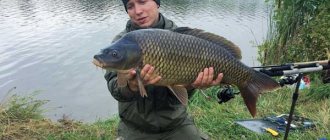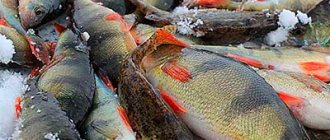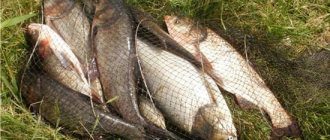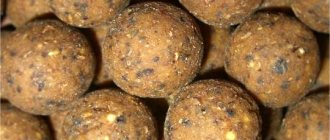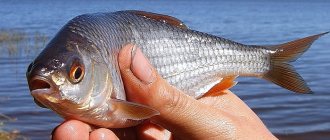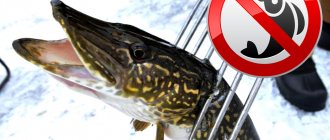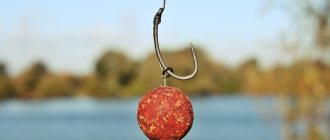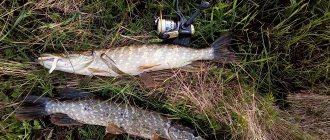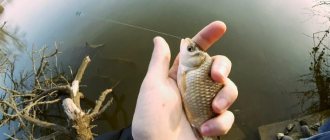Catching carp at any time of the year requires endurance, dexterity, experience and good gear from the fisherman. Although fishing for carp in the fall is the best time, since it is in the autumn that the carp begins to eat. Until mid-autumn you can count on biting both standard-sized carp and really large specimens.
But you won’t be able to just come to the pond, cast your fishing rods and wait for the giant to bite. You need to prepare good tackle that will allow you to make a good long cast and will not let you down when landing fish. After all, everyone knows what kind of resistance carp can provide, and many have already felt all its power on themselves and on their broken gear.
And, of course, you need to know where it is better to present the bait, what kind of bait, in fact, is better to offer the fish at this time of year and how to attract carp to it. We will consider all these points below in the article and you will learn all the secrets of autumn carp fishing. Of course, the best training is practice, but our theoretical information will in any case make you a more experienced fisherman and bring you closer to catching a trophy.
Best biting time
As mentioned above, autumn is a very favorable time for carp fishing; one might say, this is the best time of the year. Carp actively feed, gaining fat before winter, and this is definitely worth taking advantage of. All that remains is to figure out what time of day is best to catch carp at this time of year.
It should be understood that the water, like the air, begins to cool sharply in the fall, which also affects the activity of carp. Therefore, the deeper the autumn, the less likely it is that carp will bite at night or early in the morning. Unlike summer carp fishing, when the most promising time is from evening to dawn, in the fall everything is exactly the opposite.
Usually, in the fall, carp actively begin to bite after 9:00 and their biting continues until sunset. Of course, there are exceptions. For example, when the weather is nice and warm for several days, carp may start biting both at night and in the morning. In any case, you should focus on the warmest hours of the day, and if the difference between day and night in temperature is minimal, then you can fish around the clock.
When autumn has passed the middle, there is no point in waiting for warm days, so there is no point in going night fishing. It is enough to arrive early in the morning to have time to throw all the gear before 9 o’clock. After the sun has set or shortly before, you can safely get ready to go home.
Carp, like any other fish, can be unpredictable. It can also peck in the middle of the night in late autumn. Therefore, it is important to understand that the website rybkolov.ru talks about when the likelihood of catching carp is greater, and when a bite is unlikely. But this does not exclude other options at all.
An incident from my personal life. Summer. From evening until dawn I sat waiting for the carp to bite, but I never got it. It was getting close to lunch, so I decided to slowly get ready. I had already collected half of the fishing rods, when suddenly there was a bite. I pulled out 5 kg of carp. It was 13:00 on the clock. This seemed to be against the rules and the carp was supposed to bite at dawn or even at night, and I didn’t expect a daytime bite, but what happened happened. It’s the same in the fall – carp can surprise you.
Carp is excellently caught at the beginning of autumn and in its middle. In late autumn, carp becomes less active, but you can still continue fishing for it, although its efficiency will be much lower and there will often be days without a catch. What can I say, you can continue to catch carp even in winter.
Finding fish at night
With the end of mid-autumn, it is impossible to avoid long nights and short daylight hours. This is an integral part of cold water carp fishing, but you can use it to your advantage. It is extremely rare to notice carp on the surface of the water in winter, but it is at night that it can reveal its presence with a couple of exits. This may not be a sign that it is feeding, but at least you will understand in which part of the water area the fish are staying. And, as you understand, location is a key factor in performance in cold water.
Smart fishermen walk along the shore or sit and wait for a long time before setting up their camp to see even a hint of the presence of fish. The carp moves little as winter approaches and, even more so, with the onset of winter. Of course, we must not forget about early morning - the best time to search for slaves. But, as I already noted, at night you should be especially vigilant and listen to every splash, because it can turn into a rare fish on the shore.
Promising places
Another important aspect of carp fishing in the fall is the choice of location. In general, the places where carp are located in the fall are practically no different from their favorite summer camps, but here the weather can again play a role.

In normal autumn weather, carp stand in holes of more than 2-3 meters. If suddenly the weather gets better and the consistently warm weather lasts for several days, then the carp can go out to feed in the coastal zones, so on such days it won’t hurt, in addition to bottom gear, to throw several float rods at a short distance from the shore, under reed thickets.
If it’s cool outside, then carp will not be suitable in shallow water and you should fish only far from the shore, throwing the bait as close as possible to promising places.
It is very important to know that carp, although they stand in the pits in the fall, are not their feeding places. Usually the fish just rest there and often there are not one or two carp in the hole, but a fairly large school. In search of food, the carp comes out of the pits, but usually does not move far from them and stays on the edge at the exit from the pit. Therefore, the exit from the pit will be the most promising place.
A hole is especially attractive to carp if it has all sorts of cover, be it flooded trees, snags, a boat, or anything of the sort.
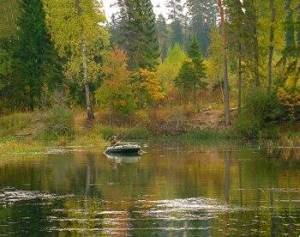
Parts of the reservoir where the muddy bottom turns into hard soil - sand or shell rock - work very well. Moreover, the bait should be placed on hard ground, but as close as possible to muddy ground. A school of carp actively scours the mud in search of food and will easily notice your tasty bait in a prominent place. If the bait falls into the mud, then it will be much more difficult for the carp to find it.
It may seem very difficult for inexperienced fishermen to place the bait so clearly, but it is actually quite simple to do. Usually silt or hard ground begins at a certain distance from the shore. When you pull out a bait with a sinker, pulling it through the mud you feel how hard it is going; when it reaches solid ground, pulling immediately becomes easier. All you have to do is determine at what distance the zone you need begins and try to cast as close to it as possible.
Just after casting, try not to pull the bait - let it lie where it fell, or completely pull it out of the water and re-cast it. If you reel in the bait after casting, the likelihood of carp biting will decrease.
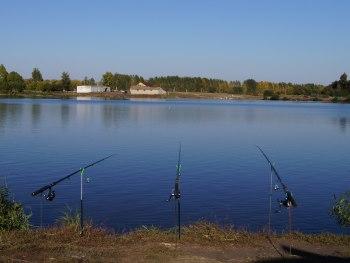
Those areas of the reservoir that were abundant with vegetation in the summer are not suitable for carp fishing in the fall, since there is no food for carp in the withering and rotting plants at the bottom.
On warm autumn days, carp like to go out into shallow water, but as soon as the temperature drops, the carp go back to the holes. Such outputs are most often observed during the temperature peak, that is, during the warmest time of the day, which is approximately lunchtime. But at the beginning of autumn, when the water has not yet completely cooled down or has not yet cooled down at all, carp happily go out to the coastal shallows to feed both in the morning and in the evening.
If you know the reservoir and its bottom or, having pulled out the tackle, found a pearl barley caught on the tackle (a pearl barley is a river mollusk, like a mussel, only from the river), then you have found another promising place for catching carp. The fact is that pearl barley usually live in colonies, and carp really like to feed in places where such colonies are concentrated. In addition, carp really like pearl barley, but the fish is not able to crush its shell. But carp will not refuse pearl barley, peeled from the shell, and you can use it as an excellent bait.
Carp fishing in autumn: bait
Now is the time to move on to considering baits for carp fishing in the fall. And in the fall, the carp again switches to feeding on animal baits, so catching carp during this period costs:
- dung worm;
- crawling out;
- bloodworm;
- maggot;
- boilies with animal bait flavors (worm, meat, blood, fish), etc.
In autumn, you should not offer large bait to carp. If you fished with large boilies with a diameter of 15 mm and above, then now you should give preference to boilies with a smaller diameter - up to 15 mm and, of course, the summer sweet aromas of boilies should be replaced with animal ones.
If you fished with a crawler, you probably used a whole large worm or even a bunch. Now it is better to choose smaller worms or even use half of it.
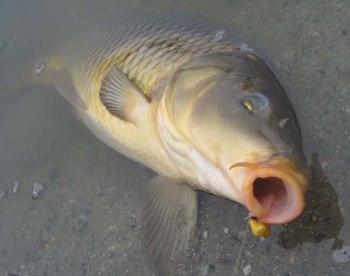
If there are no small fish in the reservoir that will eat the bait without allowing the carp to even notice it, then bait such as a bunch of bloodworms or maggots is perfect. The bloodworm can be put on a carp hook in a bunch using a special device that fixes the bloodworm on the hook with an elastic band. But if there is a lot of “trifles” on the pond, then it is better to give preference to boilies or a crawler.
Carp are caught well in the fall using a dung worm, but again, small fish can interfere with carp fishing. You can try to get out of the situation by putting a bunch of worms on the hook, but such a trick may not help and after a few minutes the “trifle” will not leave a trace of it, and you won’t even notice the bite. If there are no small fish, which is extremely rare, then no problems with catching carp should arise and a bite will definitely occur.
Using plant bait for carp in the fall is not justified; it can still work on paid reservoirs where carp are fed with such food. In general, carp almost completely switch to animal food, although, of course, there are exceptions.
Bait for carp in autumn
Of course, carp fishing can never do without bait. Because it is the bait that indicates to the carp that it has found your bait.
In autumn there should not be a lot of bait. First of all, before you start fishing, even before you start putting your gear in combat readiness, you must do a preliminary feeding of the fishing area. And while you are preparing your gear, the bait will slowly begin to act and attract fish.
To pre-feed carp in the fall, a few balls of bait the size of a tennis ball are enough for one tackle. Five tackles - 10 balls. When fishing for carp on a feeder in the fall, it is better to use smaller feeders than in the summer and maintain an active fishing pace, re-casting the tackle 3-5 times per hour.
The bait for feeders should be of the correct consistency - it should not spill out of the feeder immediately when it hits the water, but at the same time, it should quite actively come out of the feeder when it is already lying on the bottom.
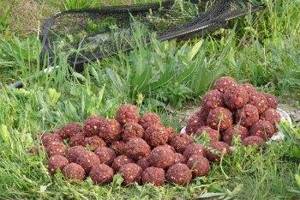
Try to cast to the same place, then all the bait will be concentrated at one point and the likelihood of a bite will increase. You can buy bait in the store, or you can make it yourself.
In the fall, it is important not to overfeed the fish with bait, while at the same time attracting it with the aroma and tasty treats in it. It is very important that the bait contains elements of animal bait; usually they are pieces of worms or bloodworms.
When it comes to flavors or DIPs, stick to animal bait scents, saving sweet summer scents for next season. Although, on some paid reservoirs, there may be exceptions if the fish are accustomed to sweet boilies throughout the year. Use a minimum of flavorings, adhering to the rule: “less is better than more.” Otherwise, you risk not attracting, but scaring away the fish.
Content
- Fishing for carp on a feeder
- Feeder rod for carp fishing
- Fishing line for carp on a feeder
- Hooks for carp
- Feeder feeders for carp fishing
- Bait for carp fishing
- TOP 3 bait recipes for carp
- How to feed bait for carp
- Bait for carp in spring, summer and autumn
- Video: DIY carp feeder
- Expert commentary
This kind of fishing is becoming more and more popular among those who like to catch carp. No, you can go after this fish with more “professional gear”, for example, using a special carp fishing rod. However, not every beginner in this matter is ready to part with hard-earned rubles to purchase such a fishing rod. That is why the feeder wins the love of thousands and millions of carp anglers. Let's look at the nuances of carp fishing with this gear.
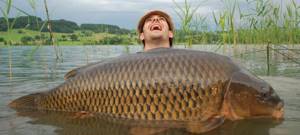
Tackle for carp fishing in autumn
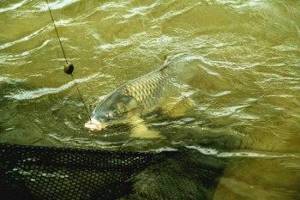
To catch carp, use a feeder or carp rods. The choice of gear depends on the size of the expected catch. It is quite possible to handle carp up to 2-3 kg with a feeder; if there is a chance of a larger carp biting, it is better to take a carp rod that is specifically designed for catching strong, large fish, which is carp.
If you take a feeder, then forms with 50-100 grams of dough, 3.5 meters long, are optimal. If the feeder is branded, then it should come with several tips, usually three, with different stiffnesses. To catch carp, it is better to use the stiffest tip, which will allow you to make a powerful hook so that the carp sits well on the hook after biting.
The reel must have a baitrunner and a good, reliable clutch. The size is suitable within 3000-4000 Shimano.
If we talk about carp rods, then it is better to take plug blanks 3.6 meters long. They will allow you to make a good long cast and easily cope with even large prey. More details about the carp rod and its equipment here. And, of course, do not forget that to catch fish such as carp, it is mandatory to have a landing net. Moreover, the landing net must be large and strong so that it does not fail at the most crucial moment.
How to make feeder tackle for carp
The effectiveness of feeder fishing for carp depends on the selection of gear. Considering that the opponent is worthy and agile, the tool must be reliable.
Feeder
The length of the rod is 2–4 m; its choice depends on the fishing conditions and at what distance from the shore the promising zone will be. If you plan to fish for carp with a feeder on a pond or river, then a rod with a length of 3 m is sufficient, but for hunting in a reservoir or large bay you will need a tool with a length of 4 m.
Rods are also distinguished by test load, this is expressed in two numbers, where the minimum and maximum weight of the bait is known. You should not overload the feeder, as there is a high probability of damage to the instrument.
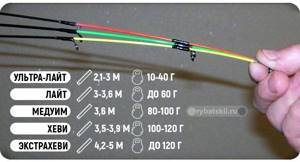
To make it easier to navigate the choice of fishing rod, you need to know what classes they are divided into according to the test:
- Ultra-light. Its length is 2.1–3 m, test load 10-40 g. The feeder is suitable for catching carp in reservoirs with calm water and weak currents. If hunting is carried out at a distance of 20 m from the shore, then it is better to use a picker 2.1 m long, and 40 m - 3 m long.
- Light. The length of the rod is 3-3.6 m, the test value is 60 g. It works in reservoirs with weak currents, making it possible to cast tackle over long distances. Convenient for catching large fish.
- Medium. The length of the tool is 3.6 m, test values are 80-100 g. It is preferred by many amateur carp anglers and is valued for its ability to work in reservoirs with different current strengths.
- Heavy. The rod is chosen for catching fish at long distances, using heavy equipment. Its length is 3.5-3.9 m, test load is in the range of 100–120 g and above.
- Extra heavy. The length of the fishing tool is 4.2–5 m, test parameters from 120 g. Relevant when fishing at serious distances in reservoirs with strong currents.
A good option for beginner fishermen is a middle class rod, a medium.
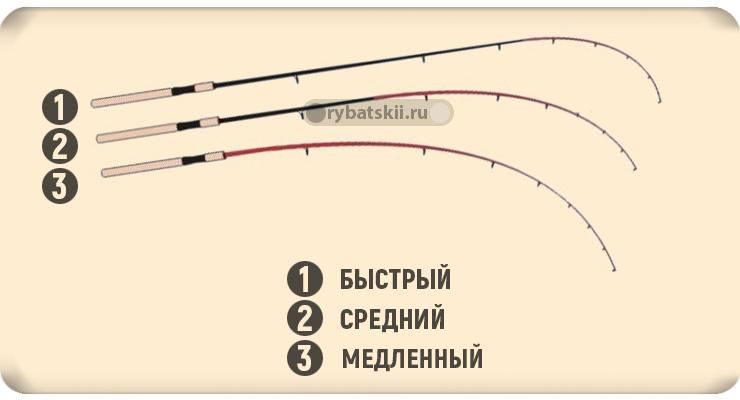
Groups are divided according to structure:
- Fast construction, where only the end bends. A rigid feeder provides excellent control over landing prey on the shore. With its help, there is a high probability of catching large specimens, preventing them from hiding in snags and holes.
- Slow action, where three quarters are bent, due to which the jerks of the fish are dampened. Works in combination with light rigs, thin fishing line and a leash.
- Medium action, where the bend falls on the upper half. The rod is distinguished by sufficient sensitivity and the ability to use light baits.
For feeder carp fishing in different reservoirs, use a universal option with a length of 3.4-3.8 m, test parameters of 80–120 g, medium action.
Reel and its characteristics
You can be guaranteed to catch carp, even large ones, using an inertia-free feeder reel of size 3000–4000. In this case, the capacity should be 150–200 meters of the main thread with a cross-section of 0.25 mm. It is not necessary, but it is advisable that the reel be equipped with a baitrunner.
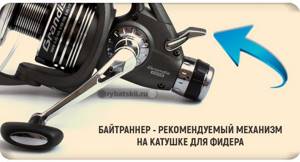
This mechanism eliminates vibrations that impair catching and increases the chances of catching trophies, making this process more efficient. When using a marked float, it becomes possible to measure the distance from the bottom of the reservoir to its surface.
Braided cord diameter
Depending on the size of the carp, the main thread is selected. Most often, fishermen use the option with a breaking load in the range of 8–12 kg. These are braids with a diameter of 0.13-0.18 mm.
For making a shock leader, monofilament fishing line is excellent, which can absorb the jerks of the trophy, dampening them when fishing. With this in mind, a thread with a thickness of 0.28-0.35 mm with slightly lower tensile strength is used. If carp fishing takes place at short and medium distances, then monofilament is quite acceptable. It is better to ask local carp fishermen about the maximum catch sizes before fishing. Otherwise, too thick braid will scare away cautious fish.
Leash: length and thickness
To make a feeder leash, choose models with sufficient rigidity and strength. The brands Colmic, Sufix, Shimano, Sunline have a lot of positive reviews. Fluorocarbon is also an option for a leader; it is more or less susceptible to abrasion and is practically undetectable in water. Braid is inappropriate here.
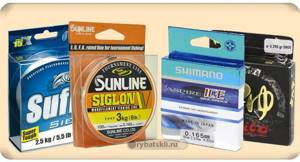
The diameter of the outlet for catching small carp weighing 3–5 kg is 0.15, maybe 0.1 mm. To catch large specimens, use a thread with a cross-section of 0.3 mm. The length of the leash is in the range of 10–80 cm. First, you should count on a lead length of 30 cm; if the bite is active, then it is increased. If there is no bite, the length is reduced.
Hook size and shape
For carp, it is recommended to use large-sized hooks, number 10 or higher. Products with a short shank and a claw bend perform excellent when fishing. Such models provide sufficient grip, eliminating the loss of prey. Another requirement for hooks is sharpness.
Feeder shape and size
The tasks of the feeder when using feeder carp fishing consist of two points:
- Deliver the bait mixture to a specific fishing point.
- Attract the attention of potential prey.
- Keep the fishing object in the fishing zone.
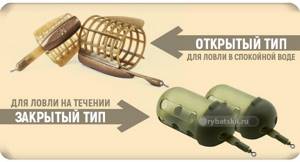
When fishing in reservoirs with calm water, open feeders are used, and closed feeders are used when the water flows. Most often, carp anglers use options such as cage, spiral, rocket, labyrinth.
Fishermen often use the feeder method, which shows results in quarries, closed ponds and lakes. It is combined with hair rigs and boilies. The advantage of this design is that it cuts out small fish and attracts trophy specimens. Dusting food and large bait work.
If you plan to fish at a considerable distance from the shore, then you should choose rockets. Due to its shape, it has high flight performance and excellent accuracy.
It is necessary to select the weight of the feeder based on the working depth. In reservoirs with calm water, for fishing at a depth of 3–4 m, equipment weighing up to 50 g is sufficient, and with currents and depths of over 5 m, models from 100 g will be relevant.
